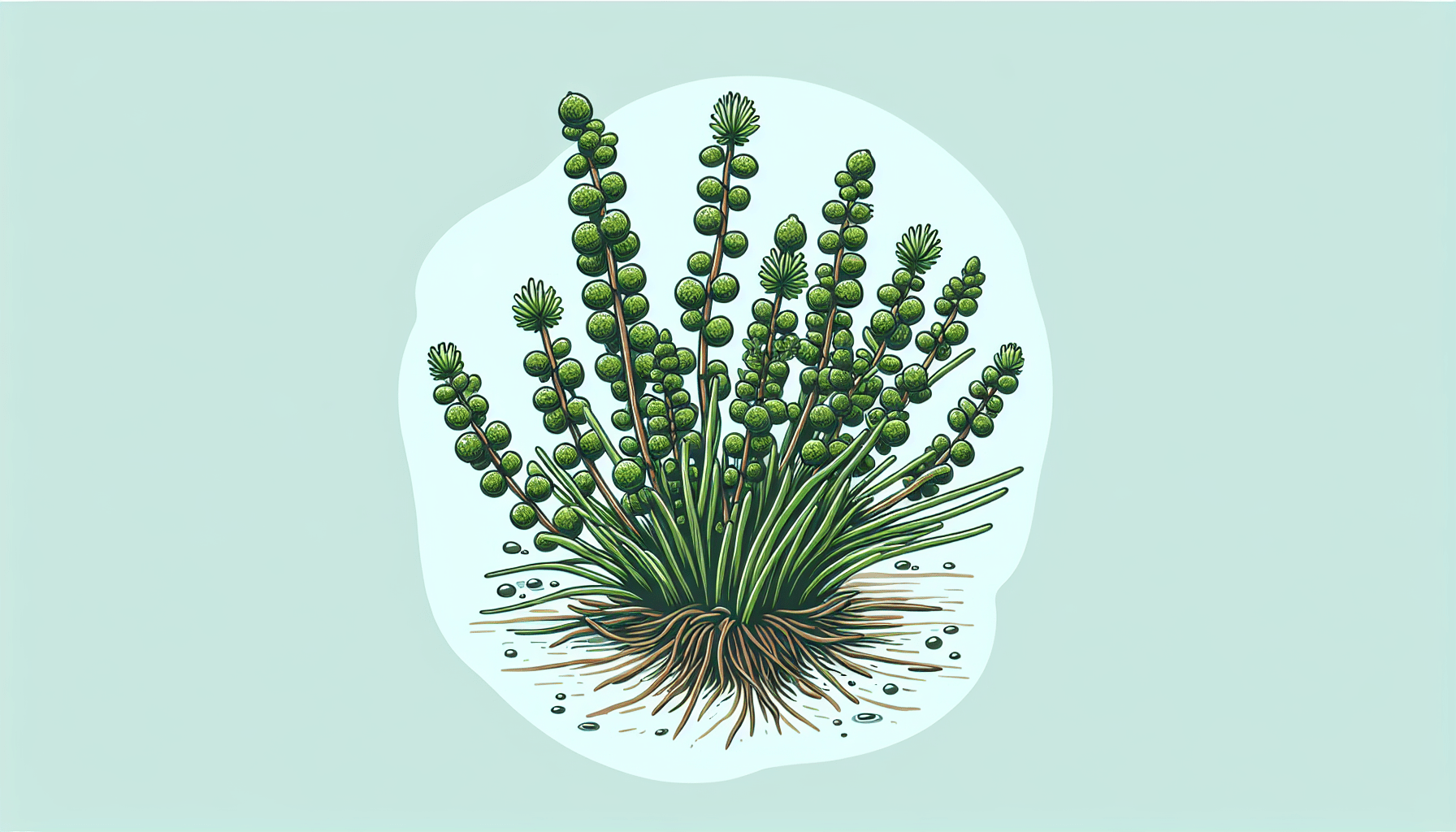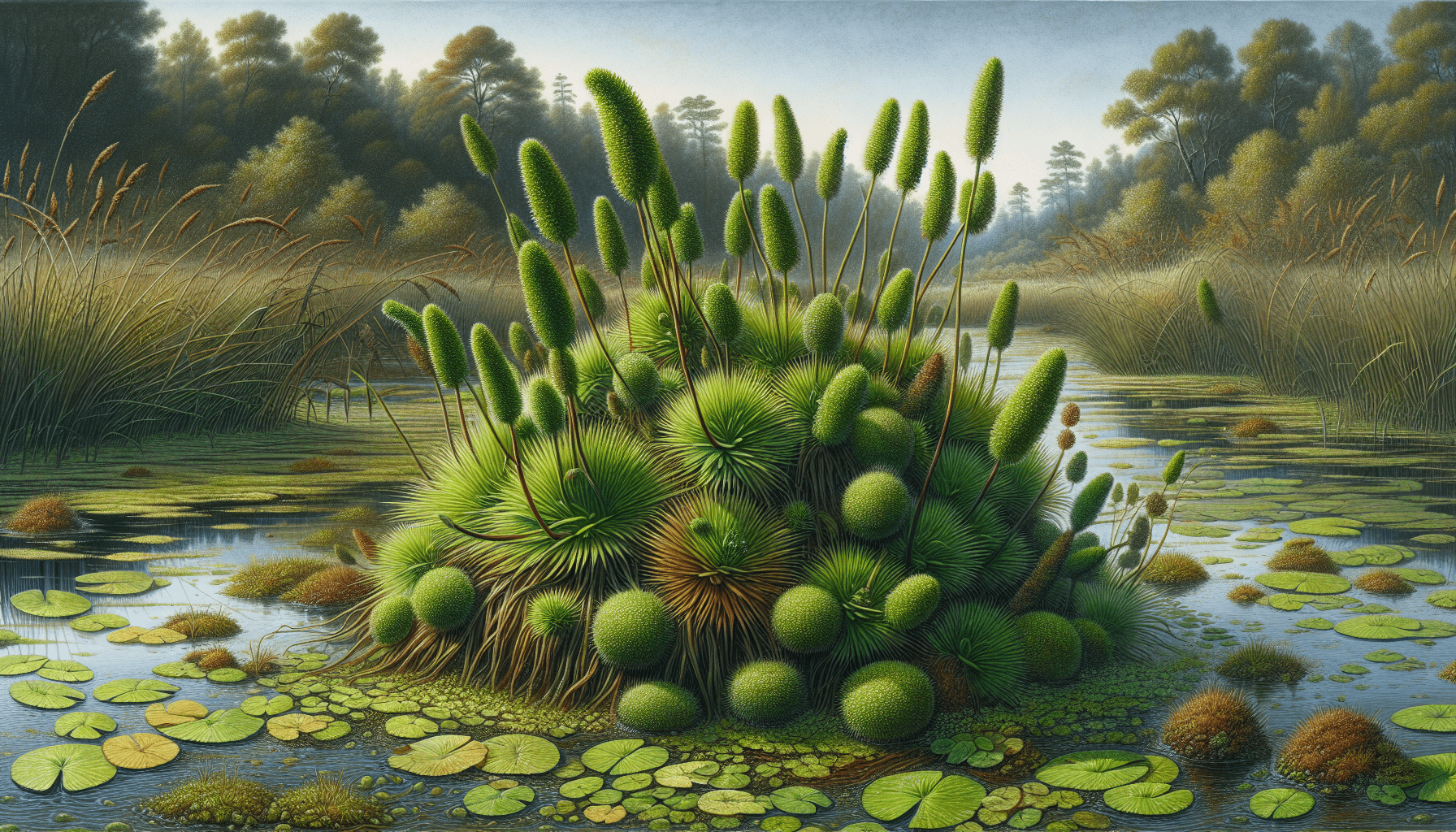The object of your curiosity is a peculiar aquatic plant species – Triglochin Maritima, or as it is colloquially referred to, ‘Arrow Grass’. This plant is not merely verdant adornment but has important implications on aquatic ecosystems and their functional dynamics. The forthcoming discourse seeks to unravel its enigmatic nature, demystifying its botonical characteristics, ecological role, distribution pattern, and the management challenges it poses, thus, furnishing you with a well-rounded understanding of this unique aquatic weed.

Overview of Triglochin Maritima
Definition and scientific classification
Triglochin maritima, widely recognized as an aquatic plant species, belongs to the Juncaginaceae family of flowering plants. The scientific classification of this species is part of the Triglochin genus, which is distinguished by its characteristic morphological attributes. Essentially, the term’s etymology stems from the Greek terms ‘tri’, meaning three, and ‘glochin’, interpreted as ‘prickle’, referring to the plant’s three-angled fruit.
Common names and synonyms
Apart from its scientific name, Triglochin maritima is known by a variety of other names, including sea arrowgrass and marsh arrowgrass, drawing from its dominant prevalence in maritime areas and marshy environments. Synonyms for the Triglochin maritima include Triglochin concinna, highlighting differing nomenclature according to regions and research contexts.
Physical characteristics and morphology
The physical characteristics of Triglochin maritima, or sea arrowgrass, are defined by their elongated and upright growth, developing in dense tufted clusters. The plant possesses leaves reminiscent of grass that can extend up to 30 cm in length. The grass blades are cylindrical, hollow, and possess a strong salty taste, thus lending them the term ‘arrowgrass.’ A key morphological attribute to note is the plant’s peculiar flowers. The flowers, small and greenish, emerge in clusters along an elongated stem that reaches above the plant’s foliage.
Habitat and Geography
Preferred conditions and environmental factors
As a resilient plant species, Triglochin maritima flourishes under a range of environmental conditions. Known as a halophyte, it shows particular affinity to salty environments, permitting its thriving existence in marine habitats such as salt marshes, intertidal mudflats, and maritime cliffs. Optimal growth conditions also include an abundant supply of sunlight and a consistent source of moderately saline water.
Geographical distribution worldwide
The occurrence of Triglochin maritima is fairly widespread and diverse in terms of geography, spanning across continents from North America to Europe and even parts of Asia. This broad distribution can be found most dominantly along coastal regions, displaying a preference towards colder regions such as the coastal sides of the northern United States, Canada, and Northern Europe.
Habitat impacts on growth and development
Habitat plays a significant role in the growth and development of Triglochin maritima. The plant displays adaptability to a range of environmental stressors such as high salt levels, consistent flooding, and low-nutrient soils; characteristics that are typically found within its natural habitat. However, drastic changes in these conditions, such as changes in sea level or nutrient imbalance, can severely hinder the plant’s growth and survival capabilities.
Growth Cycle of Triglochin Maritima
Seasonal growth patterns
The growth cycle of Triglochin maritima varies according to seasonal changes. Active growth generally occurs during the warmer stages of the year, primarily between spring and early summer, corresponding with the flourishing period of many aquatic plant species. However, in cold periods, the plant enters a state of dormancy, significantly reducing metabolic activities as a survival strategy.
Stages of growth from seedling to maturity
The propagation of Triglochin maritima primarily occurs via seed germination. Seedlings emerge during the warmer months, and with adequate conditions, develop into mature plants within a year. As the plant matures, it forms an umbel-like inflorescence, showcasing its small, greenish flowers, and eventually it yields a characteristic three-angled fruit.
Relationship with surrounding flora and fauna
Triglochin maritima often co-exists within communities of other aquatic and semi-aquatic plant species. It forms a critical part of the food chain, serving as a primary food source for a variety of marine herbivores. Furthermore, the plant’s relationship extends to some bird species, which utilize the plant’s seeds for nourishment.

Triglochin Maritima as an Aquatic Weed
Issues caused by overgrowth
Although Triglochin maritima serves many vital ecological roles, it can become problematic under circumstances of rapid growth and spread. Considered as an aquatic weed in certain environments, unchecked growth may generate dense monotypic stands that limit water movement, diminish water quality, and cause alterations in the overall community structure.
Impacts on aquatic ecosystems
The overgrowth of Triglochin maritima can significantly impact aquatic ecosystems by outcompeting native plant species for space and resources. This can result in a loss of biodiversity, destabilizing the local ecosystem. Additionally, the dense growth can disrupt navigation, obstruct views, and interfere with recreational activities such as fishing or boating.
Management and control strategies
Efforts to manage and control Triglochin maritima emphasize early detection and prompt action. The coherence of these goals applies to various strategies, including manual removal, mechanical harvesting, water-level management, and application of registered herbicides. While these methods bear the potential for successful control, ongoing monitoring and follow-up treatments are necessary for effective long-term management.
Reproduction Mechanisms of Triglochin Maritima
Flowering and pollination process
Triglochin maritima has a fascinating method of reproducing through flowers. Generally, the plant’s flowering period extends from late spring to early summer. During this time, the plant produces inflorescences carrying small, greenish flowers. The pollination process can be largely attributed to wind, with some contribution from water movement.
Seed production and dispersal
Following successful pollination, Triglochin maritima proceeds into the seed production phase. The plant yields the characteristic three-angled fruit, each containing a single seed. These seeds contribute to new plant colonization through dispersal means, primarily facilitated by water currents, wind, and certain bird species that feed on the plant’s seeds.
Vegetative reproduction capabilities
Additionally, Triglochin maritima is equipped with remarkable vegetative reproduction abilities, allowing it to extend new shoots from the existing plant — a capability that bolsters its spreading potential especially in aquatic environments.
Ecological Role of Triglochin Maritima
Role in nutrient cycling
Among its various ecological benefits, Triglochin maritima plays a crucial part in the nutrient cycling within its habitat. The plant’s ability to flourish in nutrient-poor soils enables it to amass and recycle crucial nutrients within the ecosystem, contributing significantly to the ecosystem’s productivity.
Habitat provision for wildlife
Triglochin maritima serves as an important habitat provider for a variety of wildlife. Its dense stands offer shelter and nesting grounds for many aquatic and semi-aquatic organisms, providing them a thriving environment. The seeds of the plant serve as a critical food source for certain bird species, providing nourishment throughout their life cycles.
Bio-indicator species status
Triglochin maritima can also function as a bio-indicator species, reflecting the health status of the ecosystem. Its presence, distribution, and abundance may be utilized to gauge the overall ecological condition, highlighting imbalances in the ecosystem’s health.
Conservation Status and Threats
Existing conservation status
The current conservation status of Triglochin maritima worldwide varies across its geographic distribution owing to difference in habitat and anthropogenic threats. For instance, while it may be thriving in certain regions, in others it could be vulnerable due to various acts of habitat encroachment.
Potential threats to population and habitat
Threats facing Triglochin maritima include habitat loss due to urban development, land reclamation, drainage of wetlands, and conversion of its natural habitats into agricultural lands. In addition, pollution, particularly in the form of industrial effluent, and climate change, with its associated rise in sea levels and rise in temperature, pose severe threats to its survival.
Efforts in conservation
Efforts towards the conservation of Triglochin maritima include strategies such as implementing and enforcing stringent policies on wetland protection, enforcing legal effects on damaging activities, developing habitat recovery plans, and conducting regular monitoring to ascertain its distribution and status. Conservation organizations have also been promoting the importance of this species to the public with the aim of raising more awareness about its ecological benefits.
Culinary and Medicinal Uses of Triglochin Maritima
Traditional uses in food and medicine
Historically, in various cultures, Triglochin maritima has been incorporated into culinary and medicinal practices. Regarding cuisine, the plant’s young shoots have been consumed as a vegetable or as an addition to salads after boiling or roasting. From a medicinal perspective, cultures have used Triglochin maritima to treat ailments like scurvy, owing its richness in vitamin C.
Potential health benefits
While scientific research on the health benefits of Triglochin maritima remains limited, traditional medicinal practices suggest the plant’s potential in treating ailments related to nutrient deficiencies and digestive disorders. However, further validation of these claims through robust scientific studies is needed.
Current use and research
Current use of Triglochin maritima is largely confined to its traditional practices of consumption as a green vegetable. Meanwhile, research efforts have been directed towards elucidating its ecological roles and potential medicinal properties, while also exploring means to manage its growth as an aquatic weed.
Studying Triglochin Maritima: Research and Observations
Key findings and contributions to science
Research pertaining to Triglochin maritima has extended our knowledge about the plant’s ecology and life cycle, and has made pivotal contributions to the fields of conservation biology, aquatic ecology, and invasion biology. These studies have highlighted the plant’s remarkable resilience, its ecological functions, and implications on biodiversity conservation.
Methodologies for studying and monitoring
Studying and monitoring of Triglochin maritima involve field observations, ecological sampling, and laboratory experimentation. Techniques often encompass density counts, measurement of growth parameters, and recording seasonal changes to monitor population trends.
Open research questions and future study directions
Key avenues for future research on Triglochin maritima include comprehending the implications of climate change on its distribution, understanding the mechanisms driving its invasive behavior, and elucidating its potential benefits as a food and medicinal resource. These research directions could yield fresh insights into managing this species effectively, more so, since it serves various ecological functions and holds cultural significance to many communities.
Implications of Climate Change on Triglochin Maritima
Potential impact of rising temperatures and sea levels
Climate change, primarily rising temperatures and increasing sea levels, may have serious implications for Triglochin maritima. Increased salinity may exert stress on the plant’s growth and species distribution. Furthermore, rising temperatures may disrupt the timing of its growth cycles, altering its reproductive success.
Risk of habitat loss or alteration
Projected environmental changes due to climate change elevate risks of habitat loss or alteration, leading to potential population decline or local extinction of Triglochin maritima. Changes in temperature and precipitation patterns, combined with sea-level rise, could drastically alter the wetland habitats that this species calls home.
Adaptive capabilities
However, Triglochin maritima has exhibited considerable adaptability to an array of environmental conditions, suggesting potential resilience to the changes brought about by climate change. Its capabilities in vegetative reproduction, dispersal, and rapid colonization may help the species cope with certain environmental changes. That said, ongoing research is pertinent to understand the extent of its adaptive mechanisms and the implications of future climate scenarios for its survival and distribution.